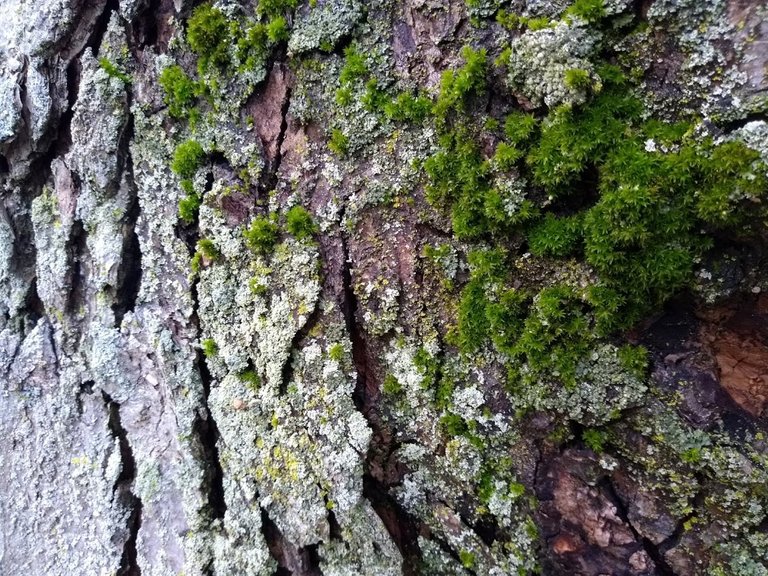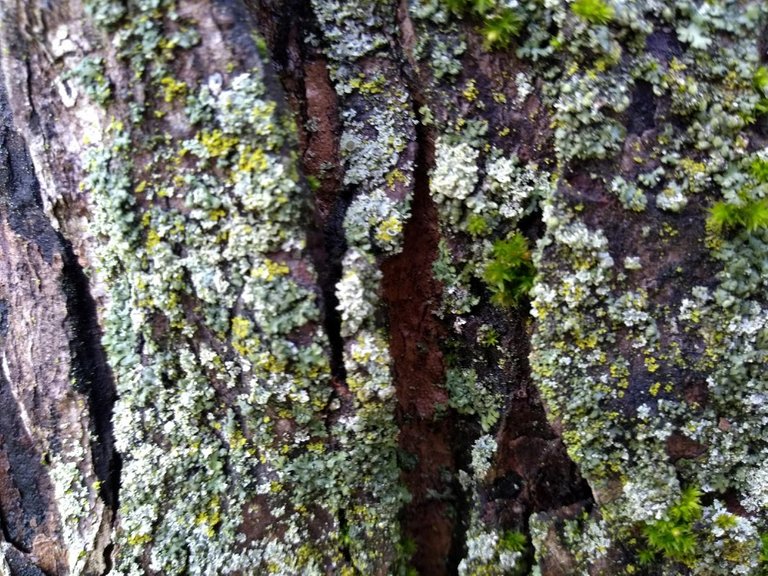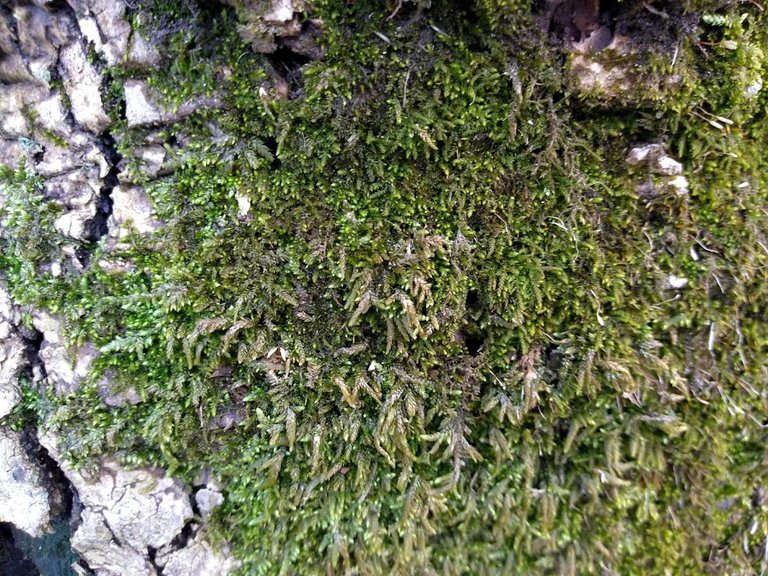After a wonderful vacation in Costa Rica (with ocean temperatures of ~85oF) it was a shock to return to the Midwest and experience the Polar Vortex! Temperatures in West Lafayette, Indiana plummeted to a high of -2oF and a low of -17oF on January 30, 2019. Thankfully, temperatures rebounded to 56oF yesterday (February 3, 2019) and it almost felt like spring!

Inspecting our magnificent 60-year old maple and ash trees yesterday, I was in awe at the rapid recovery of the epiphytes (mosses and lichens) on their bark. Our ash tree is one of the few remaining in the area because of the Emerald Ash Borer; we have been treating the tree for the last several years to protect the tree from this invasive species.

Epiphytic moss and lichens on our maple tree (February 3, 2019)

Epiphytic moss and lichens on our maple tree (February 3, 2019)

Epiphytic moss at the base of our ash tree (February 3, 2019)
Mosses and lichens are notoriously cold hardy and desiccation tolerant (Takezawa (2018), Tuba et al. (1996)). Their cold hardiness (freezing tolerance) is a function of their desiccation tolerance: by losing water this prevents intracellular ice formation (Lenné et al. (2010)). Upon rehydration they rapidly repair damaged membranes and their photosynthetic apparatus achieving full recovery in a few hours (Proctor et al. (2007)). This is facilitated by the production of proteins called rehydrins during the recovery from desiccation (Oliver et al. (2005)).
Lichens are composite organisms that arise from a symbiotic association of algae and/or cyanobacteria with multiple fungal species. The algae and/or cyanobacteria provide photosynthate for the symbiotic fungus. The fungus helps gather moisture and nutrients from the environment, and produce protective antioxidants in copious quantities. They are estimated to occupy 6% of Earth's land surface and may be among the oldest living things (for further details, please see the Wikipedia article on Lichen).
References:
So, you didn't escape the vortex... But with your Costa Rica trip, you can't really complain... too much :D
No, I cannot complain at all. It was a wonderful experience. {:-)
This post has been voted on by the SteemSTEM curation team and voting trail in collaboration with @curie.
If you appreciate the work we are doing then consider voting both projects for witness by selecting stem.witness and curie!
For additional information please join us on the SteemSTEM discord and to get to know the rest of the community!
Thank you